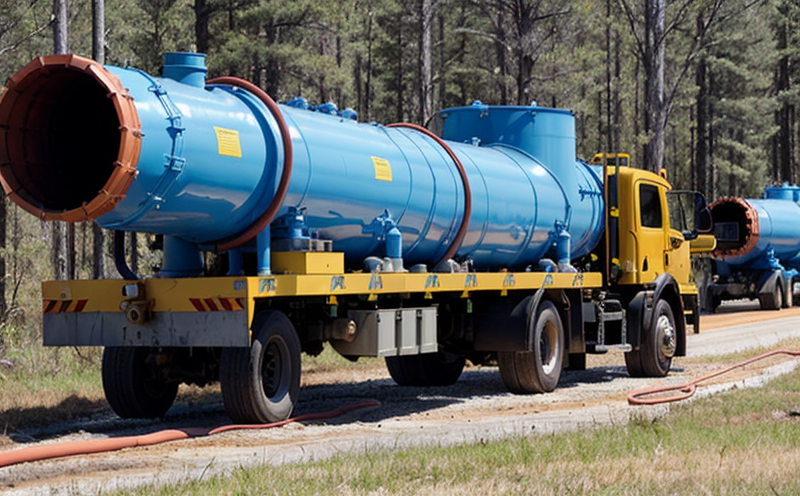ASTM E1066 Leak Detection Testing of Pipeline Systems
The ASTM E1066 standard provides a precise method for detecting leaks in pipeline systems used for natural gas distribution. This service ensures that the integrity of these pipelines is maintained, which is critical for safety and compliance. Leaks can lead to significant hazards such as explosions or gas escapes, causing environmental damage and putting human lives at risk.
The ASTM E1066 procedure involves a series of steps designed to identify even trace amounts of leaks within the pipeline system. This includes pressurizing the pipeline, monitoring pressure changes over time, and analyzing for any unexpected fluctuations that could indicate a leak. The method is highly sensitive and can detect leaks as small as 2 x 10-6 cubic feet per hour (cfh), which is far below what would be perceptible to human senses.
The service provided by our laboratory adheres strictly to the guidelines laid out in ASTM E1066. We ensure that all tests are conducted under controlled conditions, using calibrated equipment and trained personnel. This guarantees accurate results and compliance with international standards.
Our testing process begins with a thorough inspection of the pipeline system to be tested. This includes verifying the integrity of the piping, valves, joints, and other components before pressurization. Once the pipeline is pressurized according to the standard, we monitor it continuously for several hours or days depending on the length and complexity of the pipeline.
The data collected during this period is crucial as it helps in identifying any anomalies that might indicate a leak. Our technicians analyze these data points meticulously to ensure no false positives are reported. Once the test is complete, we provide detailed reports outlining our findings and recommendations for any necessary repairs or maintenance.
Our commitment to quality does not end with the completion of the test. We also offer post-test analysis and consultation services to help clients understand the implications of their results and implement corrective measures if required. This proactive approach ensures that pipelines remain safe and compliant at all times.
- Customer Impact: By adhering to ASTM E1066, we ensure the safety and reliability of natural gas distribution networks. Our testing contributes significantly to reducing accidents caused by leaks, thereby enhancing public safety. Additionally, compliance with this standard helps utilities meet regulatory requirements and avoid costly penalties.
Why It Matters
The importance of leak detection in pipeline systems cannot be overstated. Natural gas pipelines play a vital role in the supply chain of energy resources, making their safety paramount. Leaks can occur due to various reasons including corrosion, erosion, or improper installation practices. Detecting these leaks early helps in mitigating risks associated with them.
Leak detection is not just about identifying potential hazards; it also contributes to operational efficiency by preventing unnecessary downtime and maintenance costs. Regular testing ensures that pipelines are operating optimally, which translates into better performance and longer service life. Moreover, compliance with international standards like ASTM E1066 helps in maintaining a good reputation among clients and stakeholders.
Our laboratory plays an essential role in ensuring the safety of natural gas distribution networks by offering reliable leak detection services based on rigorous testing protocols. By adhering to these standards, we contribute towards creating safer communities while supporting sustainable energy practices.
Scope and Methodology
The scope of ASTM E1066 is specific to the detection of leaks in natural gas pipeline systems. This includes pipelines used for distribution as well as those involved in long-distance transportation. The primary objective is to identify any unintentional release of natural gas that could pose a risk.
According to the standard, pressurization of the pipeline system is followed by monitoring for pressure drops over time. Any significant drop in pressure is indicative of a leak. The test duration varies based on the length and type of the pipeline but typically ranges from several hours to days.
The methodology involves multiple steps including pre-test inspections, pressurization procedures, and continuous monitoring throughout the test period. Post-test analysis includes reviewing all data collected during the test run and preparing comprehensive reports detailing any findings or recommendations for corrective actions.
Our laboratory follows these guidelines meticulously ensuring that every aspect of the testing process adheres to ASTM E1066 requirements. This commitment ensures accurate results and compliance with international standards, thus providing clients with peace of mind knowing their pipelines are safe and reliable.





